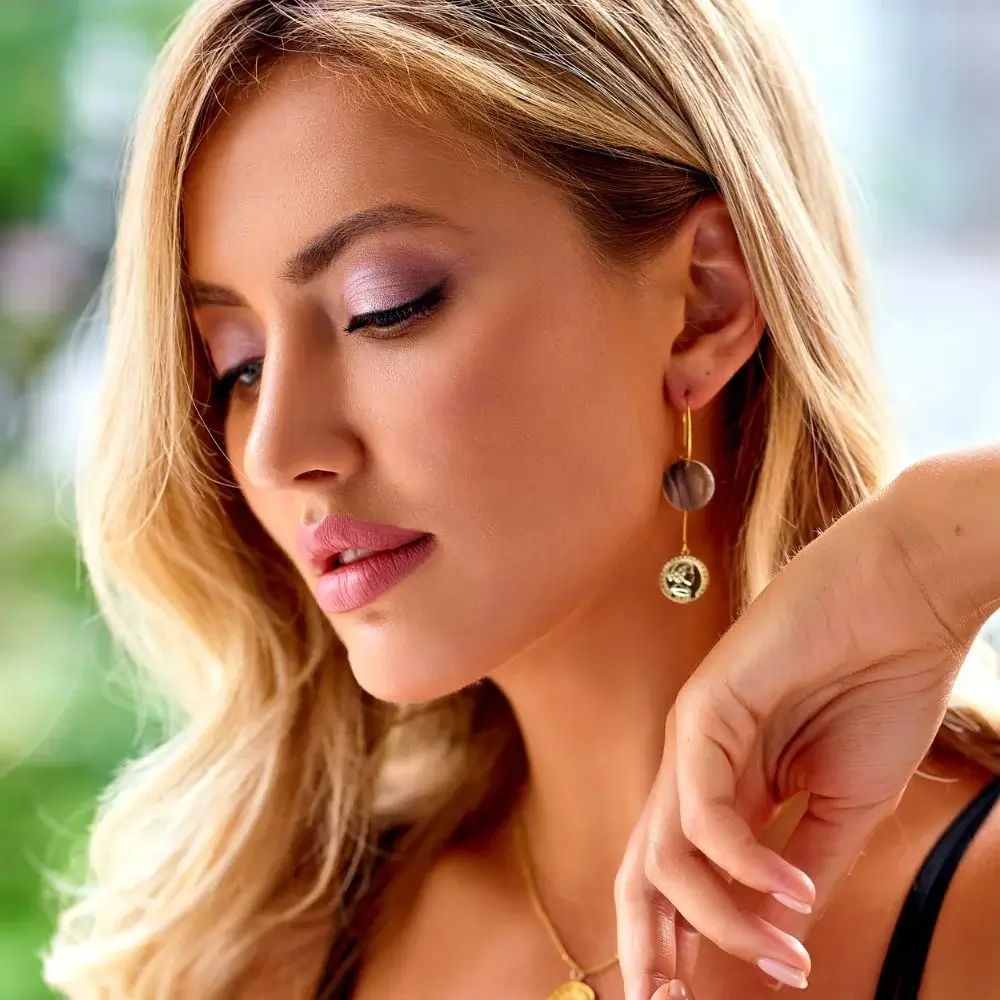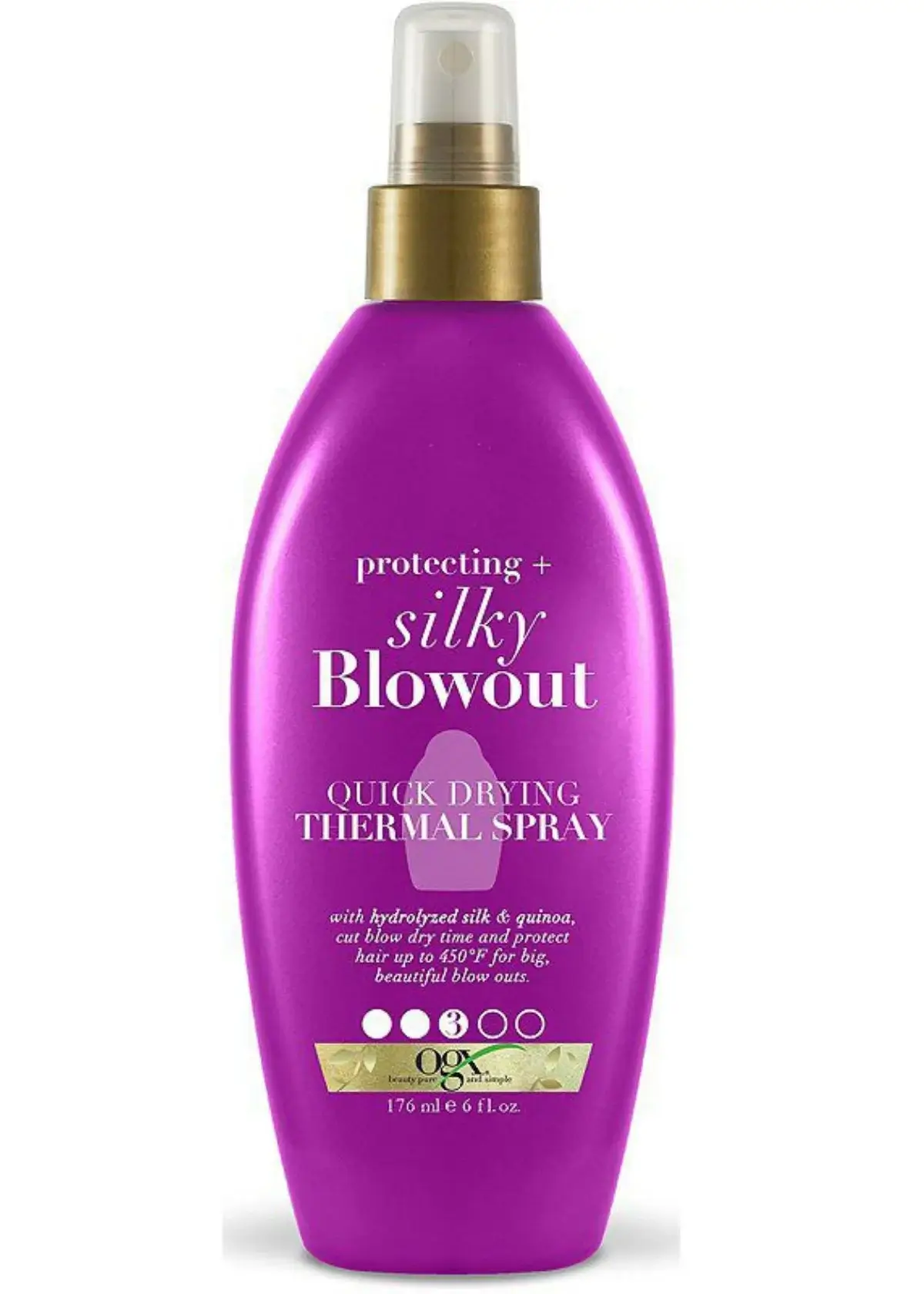We’ve all been there, you’ve got a hot date or an important interview coming up, and you just can’t resist the urge to use your trusty flat iron or curling wand to create the perfect style. But what many people don’t realize is the potential damage that heat styling can inflict on natural hair. This is where heat protectant comes into play – a must-have for anyone who loves experimenting with heat styling. If you’re wondering why heat protectant matters, keep on reading.
Protect Your Hair from Heat Damage
One of the primary reasons for using heat protectants is to protect your hair from heat damage. The heat from styling tools can harm your hair, leading to split ends, breakage, and dryness. Heat protectant works by forming a protective barrier around the strands, which helps to prevent the heat from damaging the hair’s cuticle. Consequently, your hair will be less likely to suffer from heat damage
Maintain Your Hair Health
Using heat protectants can help maintain the health of your natural hair. Heat damage can cause hair to become dry, brittle, and weak – not to mention altering your hair’s texture, especially if you’re prone to kinky, curly, or coily hair. Using a heat protectant can reduce the risk of these negative impacts of heat styling. As a result, your hair will remain healthy, have a better texture, be easy to comb through, and be more likely to grow longer.
Enhance Your Styling Ability
Using heat protectants can help enhance your styling ability. Heat protectants can provide a smooth surface for the styling tool, making it easier to style the hair. Your hair will be easier to straighten or curl, making it less time-consuming and less likely to need touch-ups throughout the day. Further, heat-protectant products usually contain other ingredients that nourish, moisturize, or add shine to your hair, giving it a professionally styled look.
Suitable for All Hair Textures and Styles
Heat protectant suits all hair textures and styles, including kinky, curly, or coily hair. Hair types that fall under those categories are prone to heat damage and breakage, so heat protection should always be noticed. Besides, heat protectant products are available in a variety of forms, including sprays, oils, and creams, making it easy for anyone to find a suitable product for their hair by matching the product suitable to their hair type, texture, and styling needs
Heat protectants are pre-styling products that help protect your hair from the heat generated by styling tools and the possible damage they can cause. Creating a protective barrier helps keep hair moisturized, healthy, and less likely to suffer from heat damage, breakage, and split ends. The benefits of heat protectants are many, and using one regularly should be an essential part of any hair care routine, especially for those who regularly use styling tools. It’s also convenient that it is suitable for all hair textures and styles. By including these products in your hair routine, you’ll be able to create the most confident yet flawless hairdos without causing unnecessary damage to your hair.
As beauty lovers, we understand the importance of maintaining healthy natural hair while still being able to rock the latest hairstyles. That's why we've researched and found the best heat protectant for natural hair, perfect for those who love to experiment with heat styling tools. Our top pick has been vetted by fashion editors and experts, ensuring that your hair will be protected and look fabulous too. So click the link and discover your next favorite heat protectant for natural hair - because looking good and feeling confident should never come at the cost of damaging hair.
What types of heat styling tools can be used with a heat protectant?
A heat protectant can be used with various heat-styling tools, including flat irons, curling wands, and blow dryers. These tools expose hair to high temperatures, which can cause damage. Applying a heat protectant creates a barrier that shields your hair from excessive heat. Choosing a protectant that suits your hair type is crucial to maximize its effectiveness. Always read the product label to ensure compatibility with the specific heat styling tool you plan to use. Using a heat protectant correctly can help maintain the health and integrity of your hair during styling.

What is the difference between heat protectants and leave-in conditioners?
Heat protectants and leave-in conditioners serve distinct purposes in hair care routines. While both products can offer some heat protection, their primary functions differ. Heat protectants are specially formulated to shield hair from heat damage caused by styling tools, forming a protective barrier when exposed to high temperatures. On the other hand, leave-in conditioners primarily focus on nourishing and moisturizing the hair, providing essential nutrients, and promoting manageability. While some leave-in conditioners might offer minor heat protection, they are less effective in safeguarding against intense heat than dedicated heat protectants.

What are the key factors to consider when choosing a heat protectant for natural hair?
Selecting the proper heat protectant for natural hair requires careful consideration of several factors. First, look for products specifically designed for natural hair, as they cater to its unique needs. Check the ingredients list for nourishing components like argan oil, shea butter, or keratin, which provide added protection and hydration. Opt for a heat protectant with a high heat threshold to withstand the temperatures of your preferred styling tools. Consider your hair's porosity, thickness, and texture to find a protectant that complements your specific hair type. Regular use of a suitable heat protectant can help maintain healthy natural hair.

How do I know if a heat protectant suits my hair type?
Finding a heat protectant that suits your specific hair type involves experimentation. Start by researching products formulated for your hair type, such as fine, curly, or color-treated hair. Read customer reviews and seek recommendations from hair care professionals. Review the patch before applying the protectant to your entire head to ensure it doesn't cause adverse reactions. Observe how your hair responds to the product during heat styling. If the protectant leaves your hair feeling moisturized, manageable, and protected, it is likely suitable for your hair type. If not, continue exploring other options until you find the perfect match.

How should I store my heat protectant to ensure its longevity?
Proper storage is essential to maintain the effectiveness and longevity of your heat protectant. Store the product in a cool, dry place, away from direct sunlight and heat sources. Avoid exposing it to extreme temperatures, which can alter its chemical composition. Make sure the cap or lid is tightly closed after each use to prevent air and moisture from seeping in, which can lead to product degradation. If your heat protectant comes in a spray bottle, ensure the nozzle is clean and unclogged. Following these storage guidelines will help preserve the quality and performance of your heat protectant.
Should I use heat tools to reapply the heat protectant if I touch my hairstyle?
Reapplying heat protectant using heat tools on your already-styled hair is not recommended. Doing so can expose your hair to other heat, potentially damaging or weakening the hair shaft. Instead, if you need to touch up or restyle your hair, consider using alternative methods like using a low-heat setting on your styling tool or using a heatless styling technique. If necessary, spritz a small amount of heat protectant on your hair, focusing on the areas that require restyling. This approach will help reduce the risk of overexposing your hair to heat and maintain its health.







